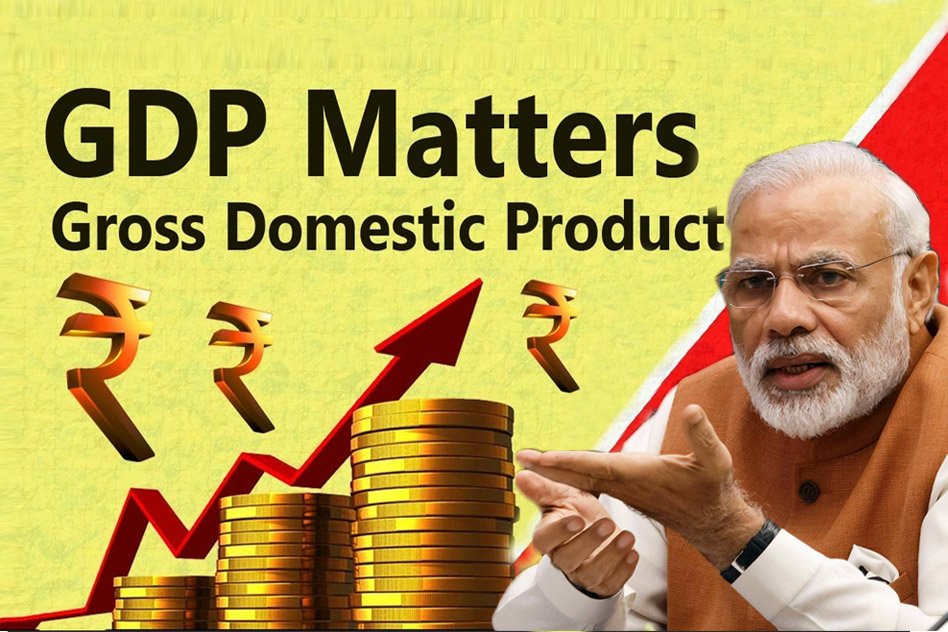
Indian Govt. Announces 7% GDP Growth, Confuses Bankers & Economists In India & Around The World
3 March 2017 1:16 PM GMT
The October-December GDP numbers are in and, if they are to be believed, India defied expectations and eluded top economists to retain the title of the world’s fastest-growing major economy.
Annual (GDP) growth for the period was revealed to be 7%, lower than the 7.4% of the previous quarter but higher than the 6.4% forecast by economists in the past weeks.
Why were the numbers surprising?
The numbers portrayed a healthy growth of 7% despite Prime Minister Narendra Modi’s November move of note demonetization, which outlawed 86% of the currency in circulation in the country at the time.
The IMF had predicted that India would grow at around 6% in the half-year after demonetization and most independent economists had opined that GDP growth would be between 6% and 7% for the third quarter. The fact that it was declared to be 7% took everyone by surprise.
Criticism
“The numbers seems too good to be true.” – Soumya Kanti Ghosh, chief economic adviser at the State Bank of India.
The numbers go against those predicted by many international observers like the IMF and even the Economic Survey and the Reserve Bank of India. Many banks – including the State Bank of India – say that the December GDP growth rate was unnaturally high and could be revised down.
“There are widespread doubts about the accuracy of the national accounts numbers,” analysts at Capital Economics wrote. “The unexpected strength of today’s data will do nothing to allay these concerns.”
A day after the numbers were made public, a Nomura report cast doubt on the 7% number, citing three reasons:
- the inability of official statistics to capture the negative growth effects on the unorganised sectors, as the official numbers are based largely on organised sector data;
- the GDP growth estimate for Q4 2015 was also revised lower by 0.8 percentage points to 6.5% from 7.2%, thereby creating a large favourable base effect for comparison;
- if companies showed their cash in hand (after demonetization) as sales, then this may be getting captured as a higher value addition in these specific sectors.
The report stated “This does not add up. High-frequency real activity data released since demonetization suggests that consumption and services were hit after demonetization because they are more cash-intensive … In our view, official GDP statistics are significantly underestimating the growth impact of demonetization.”
Government’s response
In response to the incredulity, Chief Statistician TCA Anant stated on Thursday that quarterly data indicators used for GDP estimation are “limited” in nature but “it is as good as you can do given the amount of information which is available with the frequency with which it is available.”
He added that complete information should be available by next year. Incidentally, Anant made a similar statement when GDP numbers were released for the previous quarter in June 2016.
Meanwhile, Prime Minister Modi and Finance Minister Arun Jaitley have hit back at critics of demonetization. Seemingly targeting former Prime Minister Manmohan Singh and Nobel laureate Amartya Sen, Modi told an election rally Uttar Pradesh, “On the one hand are those who talk of what people at Harvard say and on the other hand is a poor man’s son who through his hard work is trying to improve the economy.”
Previous doubts about GDP numbers
Doubts by economists and analysts regarding India’s GDP numbers is not a new phenomenon.
In June 2016, it was revealed that the Indian economy was growing at 7.6% and 7.9% in the previous quarters. However, these numbers indicated glaring anomalies. Two things which did not reflect the high growth numbers were:
- The low growth rates across important sectors which contribute significantly to the GDP of India like agriculture and industrial growth;
- The discrepancies as a percentage of total GDP being alarmingly high. In the latest GDP numbers, discrepancies as a percentage of total GDP were 51%, i.e if discrepancies are removed from the GDP the actual GDP would come down to 3.9 %.
Implications
The relatively strong growth rate will likely mean that the RBI will not cut interest rates further and will focus solely on inflation. The inflation rate has remained unchanged for over a month, with the RBI citing global economic uncertainty and inflationary risks as reasons for the same.
Some economists argue that the numbers are unreliable and this will affect India’s consumer confidence while others say that the numbers are a temporary relief and growth in future quarters will be slower. Further information on parameters involved will take more time to be released, and thus a more concrete analysis is not possible at present.
Meanwhile, the future course of the Indian economy is an ascending curve. The only variable is the slope of the same.
The Logical Indian appeals to the government to conclusively explain the unusually high doubts cast on the latest GDP data. We also appeal to the mainstream media to take this issue up, discuss it, and make people aware of what is right or what is wrong with our economy and the ways in which we calculate growth. As concerned citizens, we appeal to the government and the media to throw light on this issue.
 All section
All section













